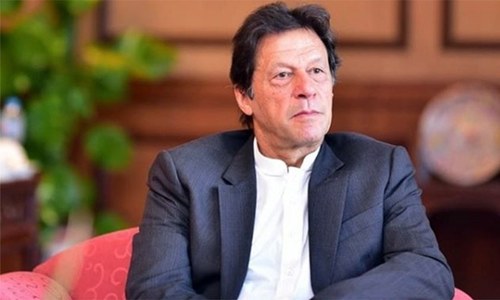ISLAMABAD: The Institute for Policy Reforms (IPR), a think tank led by a PTI leader, on Monday questioned the government’s celebrations over Pakistan’s improved ranking in terms of post-Covid economic recovery, saying this did not point anything significant.
Pakistan ranked second after Egypt among selected 50 major economies monitored by The Economist’s global normalcy index last week.
“With news all bad, it makes sense for government to clutch at the weakest straw that brings it pretences of glory,” said the IPR in a fact-sheet released on Monday. The IPR is led by former minister for investment and commerce Humayun Akhtar Khan of the PTI.
It noted that in an environment of much chest-thumping and unmerited celebration, this was to be expected. “Yet, because it is the eminent Economist’s Index and because the celebrations don’t seem to stop, it serves us well to scratch beneath the surface,” the think tank said, adding that the index assessed the scale at which an economy was currently operating compared to a pre-pandemic level and how consumer behaviour may have changed.
PTI man-led think tank says when growth was already low, it’s no badge of honour to reach where the normal was
Also, the index was a comparison with the pre-pandemic economic activity but not at all “a measure of economic dynamism or performance”. So, an economy in sub-Saharan Africa, not especially prosperous in 2020, could have a higher Global Index score in 2022 than that of, say, Singapore. It merely means that despite the virus, the economic activity of that country is closer to reaching the level of early 2020.
Two points merit attention. Most dynamic economies had elevated levels of economic activity before the virus put an end to them. So, those countries that take stringent action against the virus, China and a few more, naturally see greater fall in economic activity. Few would disagree that these are well governed states and even at low normalcy levels, their economies are more buoyant than Pakistan’s.
Importantly, the Economist’s Index also did not suggest that an economy lower on the Normalcy Index was performing worse than an economy at a higher level. The more developed economy just has not reached its high 2020 economic activity level or it may have changed the way it conducts some of those activities — the last being the index’s more important point.
Secondly, economic activity in Pakistan “was already at a snail’s pace before the pandemic. A number of mishaps from poor decision-making and lack of judgment had brought it to a halt”, the IPR noted, adding that in 2019 and 2020, the economy had to face the hubris of an FBR with all guns blazing on a mission to end tax evasion. In effect, it put an end to most business transactions.
On top of that, defying all logic, the SBP was celebrating inflow of forex to Pakistan. That money came at 13pc interest (LIBOR was less than 2pc in January 2020) and cost “us dearly in interest in forex. Just then, sudden and thoughtless massive devaluation of the rupee had left the economy reeling in disequilibrium”, the IPR said, noting that firms were constantly adjusting to new prices. The only one celebrating would have been money changers.
It was no surprise then that FY19 had a growth rate of below 2pc and FY20 of minus 0.5pc. In FY 20, the virus affected the economy in just its three last months, not enough to cause negative growth. “If the pre-pandemic economic level was already at the bottom, what pride is there in going back to it?” the IPR asked.
It said that in fact, inadvertently, the pandemic may have saved the country’s economy. It gave a reason to put a hold on the rigour imposed by the IMF which encouraged economies to inject liquidity and rapidly released $1.4bn to Pakistan. The SBP followed their example to make available concessional financing to businesses via its TERF window. “The sudden injection of capital revived the economy, which was thus far under assault from several GoP and SBP missteps.”
The Economist’s Index takes pre-pandemic activity levels as one hundred. “When growth is already low or minus before the virus broke, it is no badge of honour to reach back to where our normal was,” the IPR said.
“Activity is back at normal levels in just two of the countries we track: Colombia and Pakistan,” The Economist says.
On January 18, 2022, Pakistan stood at 106.6. The USA was at 69.5, Japan 69, Vietnam 67.6, China 65.7 and South Korea 65.5. All economies in the latter group have much higher vaccination rates than Pakistan, a major condition for return to normalcy. They have far better health and social services and had also made vast amounts of capital infusion, over $3 trillion by the USA alone. Clearly, they had very high levels of economic activity and it will take a while for them to get back to those levels.
Published in Dawn, January 25th, 2022














































